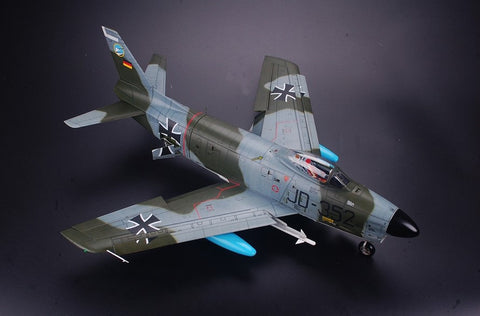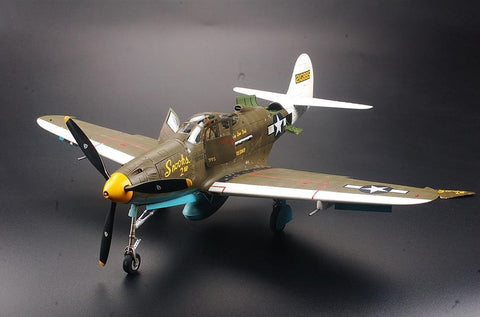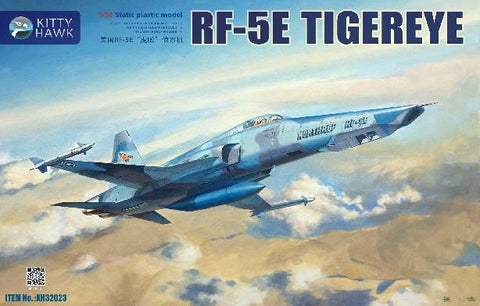
Kitty Hawk Aircraft 1/48 RF101C & G/H VooDoo Fighter Kit
Estimated Shipping: 2-3 Business Days
KTY-80116The Voodoo's career as a fighter-bomber was relatively brief, but the reconnaissance versions served for some time. Along with the US Air Force's Lockheed U-2 and US Navy's Vought RF-8 Crusaders, the RF-101 reconnaissance variant of the Voodoo was instrumental during the Cuban Missile Crisis and saw extensive service during the Vietnam War.
Using the reinforced airframe of the F-101C, the RF-101C first flew on 12 July 1957, entering service in 1958. Like the RF-101A, the RF-101C had up to six cameras in place of radar and cannons in the reshaped nose and retained the bombing ability of the fighter-bomber versions. 166 RF-101Cs were built, including 96 originally scheduled to be F-101C fighter-bombers. The 1964 Project "Toy Tiger" fitted some RF-101C with a new camera package and a centerline pod for photo-flash cartridges. Some were further upgraded under the Mod 1181 program with automatic control for the cameras.
Using the reinforced airframe of the F-101C, the RF-101C first flew on 12 July 1957, entering service in 1958. Like the RF-101A, the RF-101C had up to six cameras in place of radar and cannons in the reshaped nose and retained the bombing ability of the fighter-bomber versions. 166 RF-101Cs were built, including 96 originally scheduled to be F-101C fighter-bombers. The 1964 Project "Toy Tiger" fitted some RF-101C with a new camera package and a centerline pod for photo-flash cartridges. Some were further upgraded under the Mod 1181 program with automatic control for the cameras.
Twenty-nine (29) F-10As were converted to RF-101Gs and thirty-two (32) F-101C's were converted to RF-101Hs as the fighter versions of the Voodoo were withdrawn from service. These conversions produced aircraft of capable of daylight low-level reconnaissance and the aircraft were assigned directly into ANG units in Kentucky, Arkansas and Nevada. The first delivery of the aircraft to the squadrons was in 1966.
The RF-101C saw service during the Cuban Missile Crisis and soon followed the North American F-100 Super Sabres in October 1961, into combat when RF-101s from the 67th Tactical Reconnaissance Wing deployed to Vietnam. The RF-101C was deployed operationally during the Vietnam War, sustaining losses with the first F-101 being lost in November 1964 to ground fire. From 1965 through November 1970, its role was gradually taken over by the RF-4C Phantom II. In some 35,000 sorties, 39 aircraft were lost, 33 in combat, including five to SAMs, one to an airfield attack, and one in air combat to a MiG-21 in September 1967.
The RF-101C's speed made it largely immune to MiG interception. Twenty-seven (27) of the combat losses occurred on reconnaissance missions over North Vietnam. In April 1967, ALQ-71 ECM pods were fitted to provide some protection against SAMs. Although the Voodoo was again able to operate at medium altitudes, the added drag and weight decreased the speed enough to make RF-101 vulnerable to the maneuverable (and cannon-equipped) MiGs and thus requiring fighter escort.









